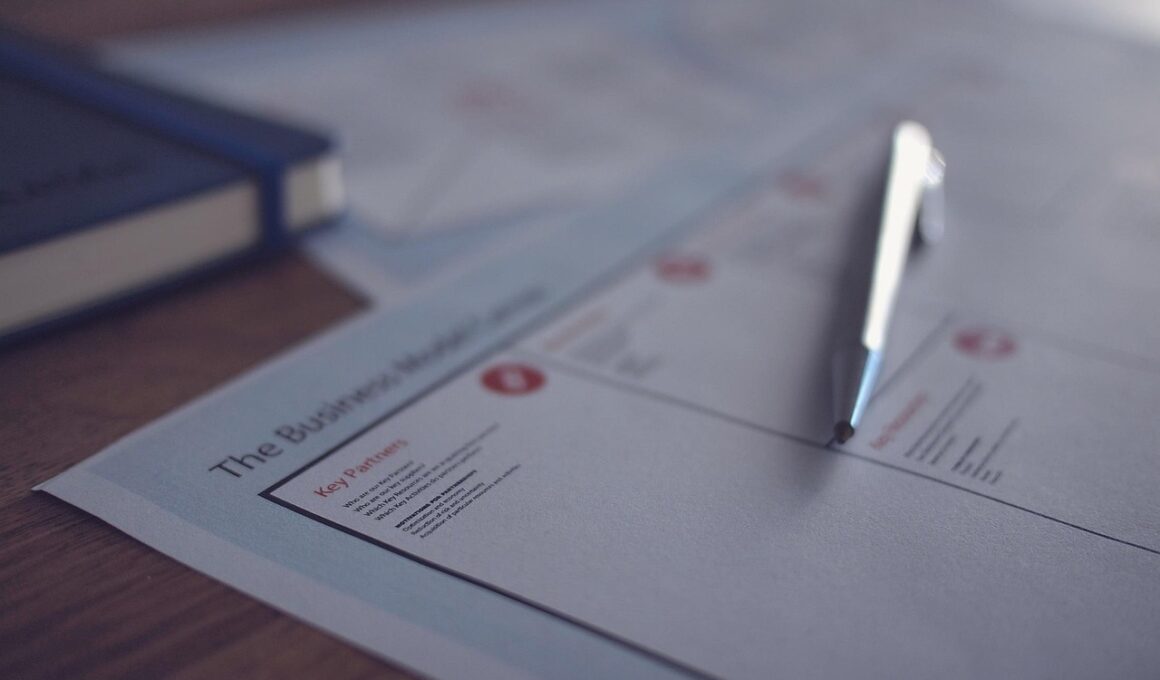Techniques for Writing Persuasive Business Proposals
Writing persuasive business proposals is essential for successful business communication. It requires a clear understanding of the needs and expectations of the intended audience. Start by conducting thorough research on the client, their industry, and the specific challenges they face. This knowledge enables you to tailor your proposal to address their unique concerns. Structure your proposal logically, with a strong introduction, a detailed body, and a compelling conclusion. Each section should flow seamlessly, guiding the reader through your arguments. Use clear and concise language, avoiding jargon that may confuse the reader. Engage your audience by incorporating storytelling elements that highlight how your solution directly addresses their pain points. Utilizing visuals such as graphs or charts can also enhance understanding and retention of information. Additionally, include testimonials and case studies to provide social proof of your capabilities. A well-prepared proposal not only conveys the necessary information but also builds trust and rapport, increasing your chances of winning the contract. Ultimately, persuasive proposals should inspire confidence and encourage the reader to take the desired action.
Another effective technique for crafting persuasive proposals involves emphasizing benefits over features. Clients want to know how your product or service will improve their processes or solve their problems. In your proposal, clearly outline the advantages they will gain by choosing you over the competition. Be specific; use quantifiable metrics when possible to illustrate the expected return on investment. For example, mention potential cost savings, efficiency improvements, or increased revenue possibilities. To make your proposal even more compelling, incorporate a well-defined pricing strategy that conveys value. Avoid hidden costs or complex pricing structures that could discourage a positive response. Always remain transparent regarding your fees and deliverables. Additionally, enhance your proposal by anticipating objections and proactively addressing them within the text. This demonstrates attentiveness and proves you have carefully considered their concerns. Furthermore, including a well-crafted call to action at the conclusion of your proposal is crucial. Encourage the client to contact you for a follow-up or to discuss the next steps towards collaboration, thus moving the conversation forward and facilitating engagement.
Structuring Your Persuasive Proposal
The structure of your persuasive business proposal plays a critical role in influencing the client’s decision. Start with an engaging executive summary that encapsulates the proposal’s main points. This section should be enticing enough to grab attention, sparking interest in your entire proposal. Next, provide a detailed overview of the problem, establishing a strong connection with the client’s pain points. After identifying the challenges, present your proposed solution in a clear and organized manner. Use headers and bullet points to break down complex information into digestible parts. This format encourages readers to engage more deeply with the content. Furthermore, consider including a timeline for implementation, as well as measurable benchmarks to track success. Visual aids, such as infographics, can summarize your points effectively, enhancing clarity. You should also introduce your team and their qualifications to inspire confidence in your expertise. Finally, remember to wrap up with a strong conclusion that reiterates the benefits of your offer and reinforces your commitment to helping the client achieve their goals.
Incorporating clear visual elements is another critical technique in persuasive proposals. Visuals enhance reader understanding and retention, making your points more impactful. Infographics, charts, and tables can succinctly present data while illustrating trends and comparisons that support your arguments. Additionally, using consistent branding throughout the proposal fosters professionalism and coherence, making your proposal visually appealing. Make sure each visual element directly relates to the content, providing relevant context and clarity. Keep in mind that too many visuals can overwhelm the reader, so use them judiciously. You can also consider using color coding to emphasize important sections or information. Importantly, ensure that any graphics used are of high quality, as this reflects your attentiveness to detail and overall professionalism. Moreover, when using any images, graphs, or tables, always provide proper captions and sources. By doing this, you guide the reader in understanding the significance of each visual element and how it ties back into your core message, ultimately making your proposal more persuasive and credible.
Understanding Your Audience
Gaining a deep understanding of your audience is essential in writing persuasive proposals. Know who will read your proposal, focusing on their professional background, goals, and pain points. Tailoring your language and content to their specific interests is crucial for creating an engaging and relevant document. For instance, if your audience values data-driven results, present statistics and case studies that demonstrate the effectiveness of your solution. Conversely, if the audience comprises creatives, a narrative approach might resonate better. Active listening also plays a vital role; if you have had previous discussions with the client, incorporate any feedback or topics that emerged. This demonstrates responsiveness and reflects a genuine commitment to their needs. Furthermore, when possible, personalize each proposal with the client’s name or company information. Such personalized touches make the reader feel valued and acknowledged. Highlight your willingness to collaborate and adapt your solution to meet the unique specifications of the client. By focusing on your audience’s preferences, you can craft a persuasive proposal that stands out in a competitive landscape.
Using a professional and polished tone in persuasive business proposals is paramount. The way you communicate reflects your brand’s values and credibility. Ensure that your writing style aligns with the industry norms yet remains accessible. Avoid overly complex sentences or industry jargon that could alienate the reader. The goal is to create a connection while clearly delivering your message. Use a positive and proactive tone to instill confidence in your proposed solution. Phrases like “we can” or “our approach will” suggest collaboration and optimism. Regularly use active voice to convey clarity and decisiveness, making your arguments stronger. Additionally, proofread your proposal meticulously before submission to avoid spelling and grammatical errors, which can detract from your professionalism. Consider seeking feedback from colleagues to gain fresh perspectives on readability and impact. Such refinements can significantly enhance the overall quality of your proposal. Moreover, using consistent formatting, such as fonts, headings, and bullet points, contributes to a cohesive appearance that keeps the reader engaged. Ultimately, a polished proposal not only conveys information but also portrays you as a skilled and trustworthy partner.
Follow-Up Strategies
After submitting a business proposal, follow-up strategies are vital for maintaining momentum and demonstrating your engagement. Timing is essential; consider reaching out a week after submission to inquire about the client’s thoughts on your proposal. This shows you are proactive and genuinely interested in their feedback while ensuring you stay top of mind. Your follow-up should be concise and respectful; express gratitude for their consideration and offer to address any questions. Sending a brief email is often sufficient, providing an easy avenue for the client to respond. Moreover, customizing your follow-up message to reference specific aspects of the proposal can reinforce your attentiveness. Consider employing multiple communication channels to reach your audience effectively. If your proposal was submitted via email, a phone call might add a personal touch. Always remain polite and patient throughout the follow-up process, as clients may have their own timelines for decision-making. By implementing a thoughtful follow-up strategy, you can significantly increase your chances of success, moving towards agreement and collaboration.
Finally, consider leveraging technology to enhance your proposal’s impact and streamline the process. Various software tools can assist in creating visually appealing proposals while maintaining organization. These platforms often offer templates that simplify the structure, ensuring all essential components are included. Tools like electronic signatures facilitate quicker approvals, saving both you and the client valuable time. Additionally, employing collaboration software can enhance real-time feedback, allowing you to engage directly with clients during the drafting process. By utilizing such technologies, you can create more dynamic proposals, incorporating multimedia elements that enhance interactivity. Remember to maintain a balance; while technology offers great opportunities, the proposal’s core content remains paramount. The integration of tech should support, not detract from, your persuasive messaging. Ultimately, the goal is a well-crafted proposal that leverages both compelling writing and effective design. This combination will help convey your value proposition clearly and powerfully. By making use of these various techniques and strategies discussed throughout this article, you will improve your chances of writing persuasive proposals that stand out.


